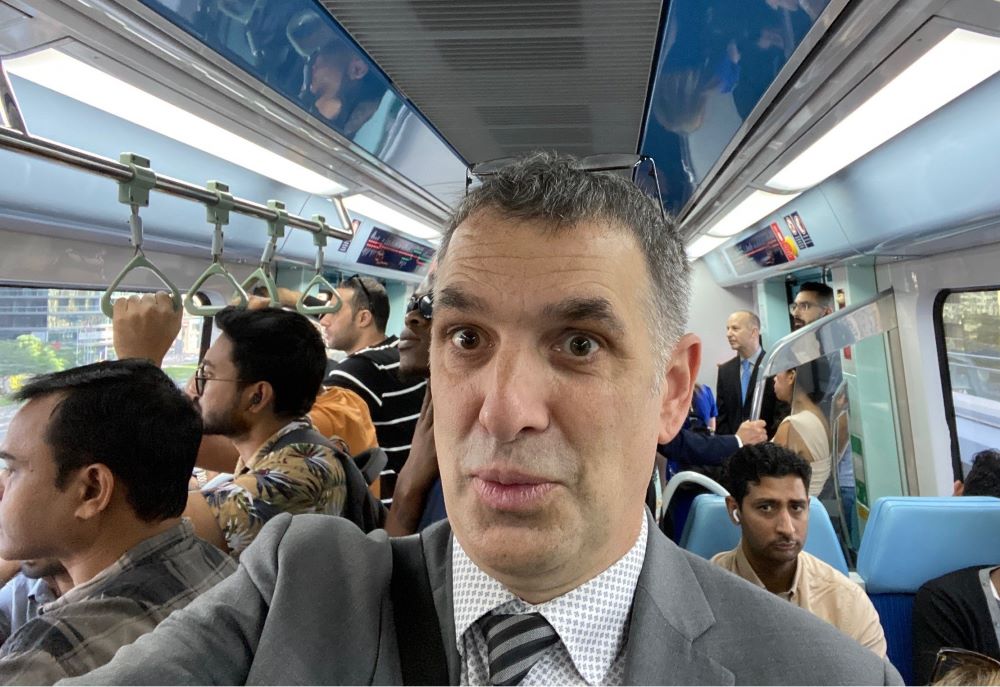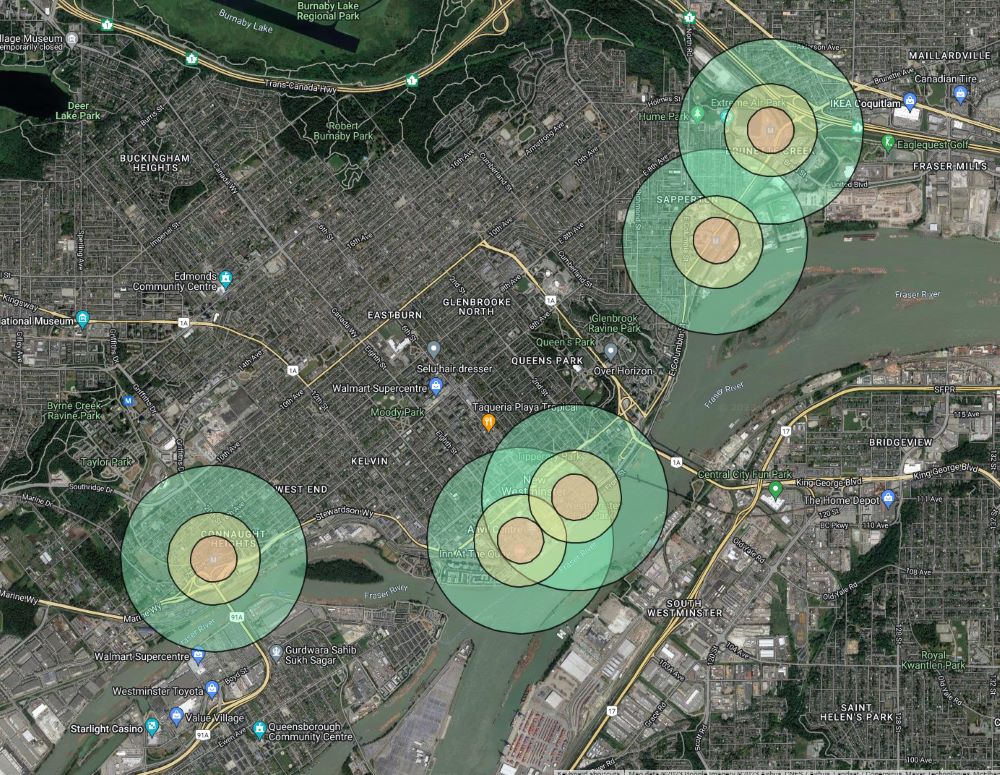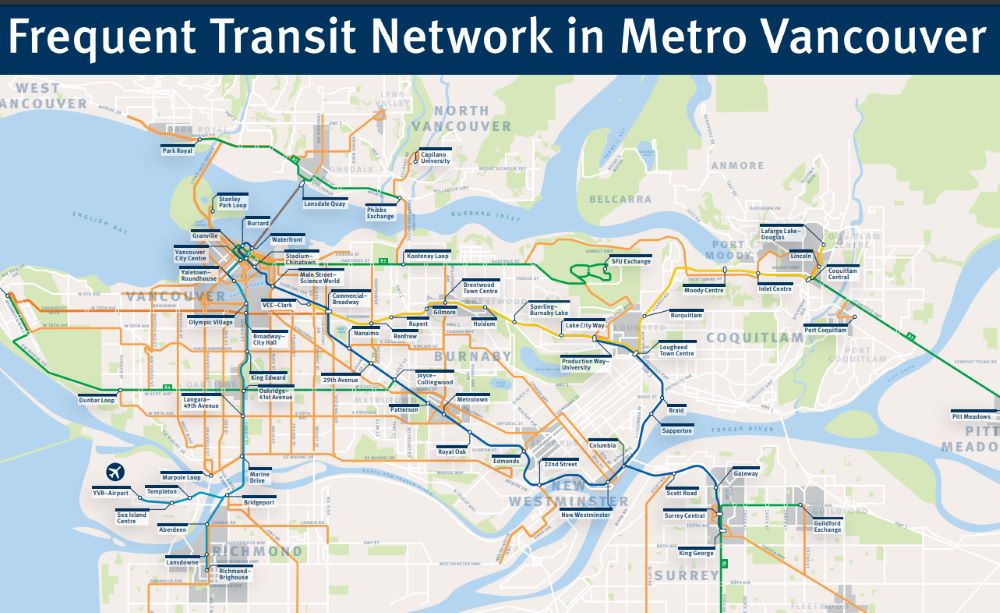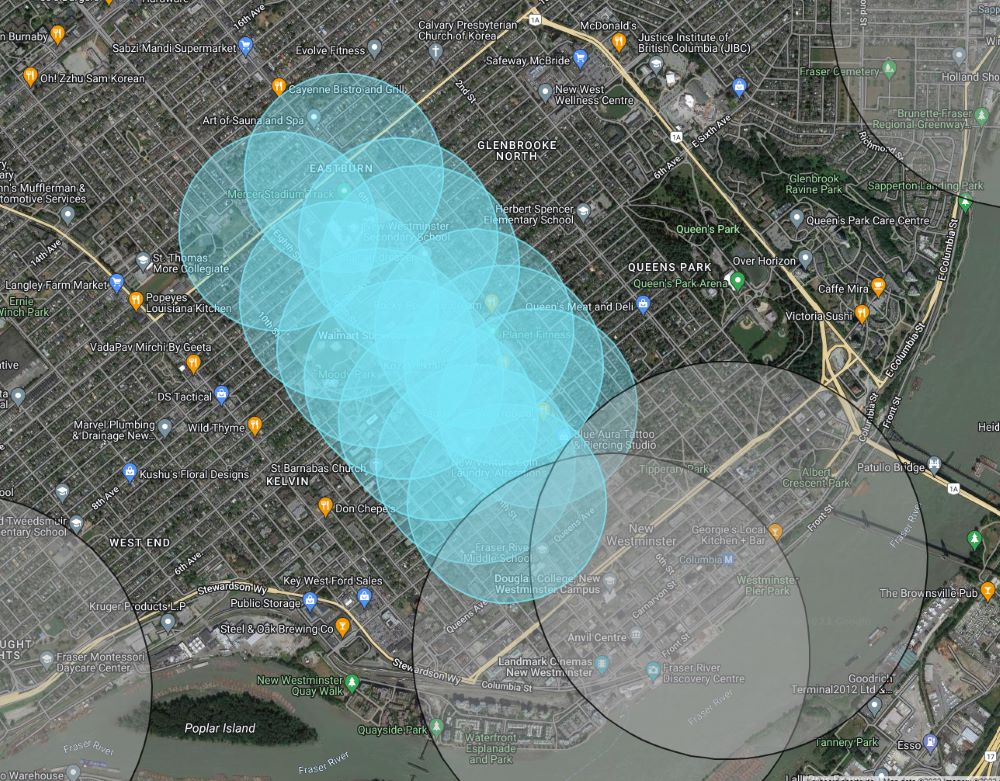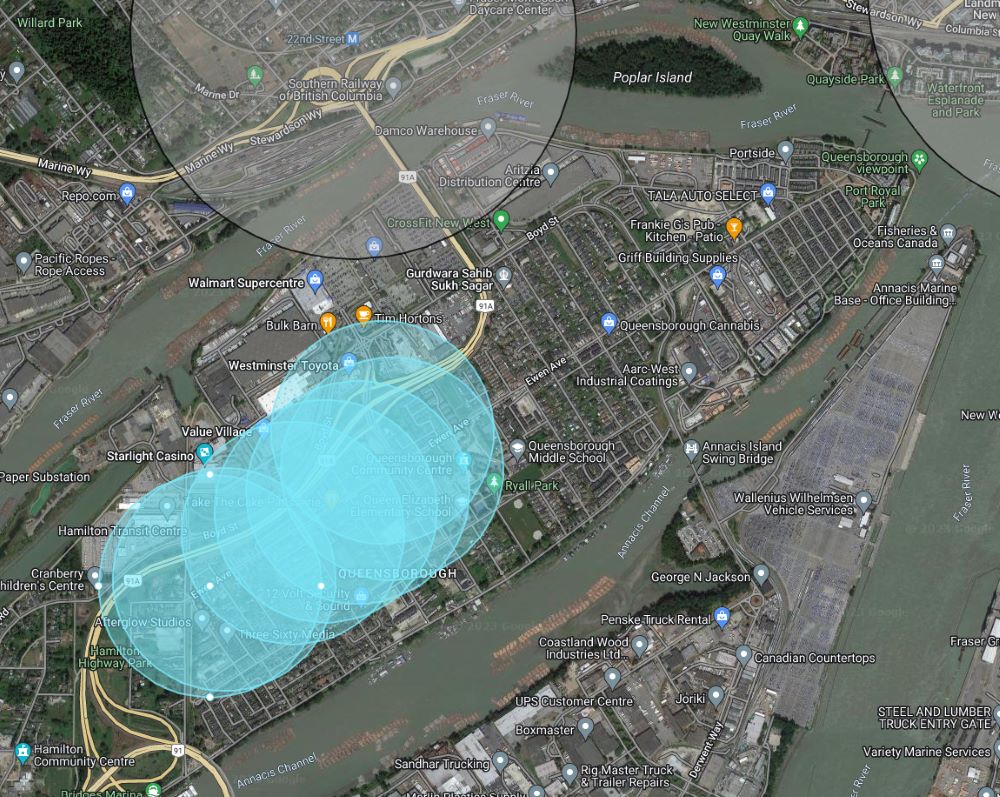In my last post, I wrote about how New Westminster was invited to COP28, and what the landscape of COP28 looked like. In this post I am going to write about the role of Local Governments at the event, and detail the Local Climate Action Summit that opened the conference.
The invitation came from ICLEI, which was the key coordinator of the LGMA (“Local Governments and Municipal Authorities”) Constituency to the UNFCCC. They worked with two other organizations, C40 Cities (who managed the travel logistics of Mayors and senior staff from more than 100 cities around the globe) and the Global Covenant of Mayors for Climate and Energy. This is already a long series of posts, so best to follow the links if you want to know who those organizations are and why they exist.
The goal of the LGMA is to influence the UNFCCC negotiations, empowered by the preamble of the 2015 Paris Agreement, which calls on all levels of government to work together, and the Multilevel Action Roadmap put together in 2019. As a Constituency, we put forward a COP28 Position Paper (link here) with a 10-point Call to Action that is delivered to the national level government negotiating teams. The hope is (as is spelled out in their mandate) that these Calls to Action will be integrated into the deal that is struck by the end of COP28. This Paper and an accompanying Open Letter (link here) is delivered through a Ministerial Meeting, but before that, we had a conference to attend.
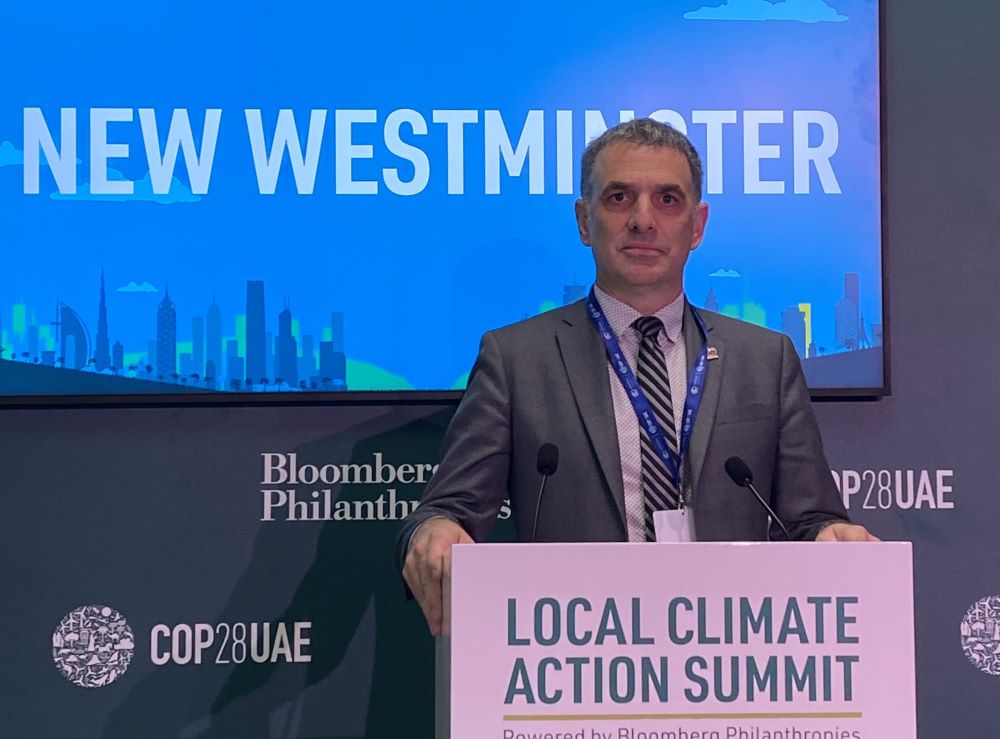
For us Local Government types, the first part of the COP28 program was a two-day conference-within-a-conference called the Local Climate Action Summit (“LCAS”). This was held in several sites within the COP28 Blue zone, but focused on a pavilion called the LCAS Hub. The LCAS was hosted by the COP28 Presidency, as a part of the commitment the UNFCCC has made since the preamble to the 2015 Paris Agreement to include all levels of government in addressing climate change. COP28 represented the first ever LCAS, and it was opened by the COP28 President Dr. Sultan bin Ahmed Al Jaber, by the Secretary General of the United Nations Antonio Guterres, and the Chair of the Board of the C40 Cities (and former Mayor of New York) Michael Bloomberg.
The attendees of the LCAS were Mayors and senior Climate Action staff from several hundred cities around the world. There were local governments from every continent, ranging in size from megacities like Rio De Janerio to small cities like Yellowknife. There were perhaps a half dozen from Canada, with New Westminster being the only municipality in British Columbia represented. The program was intensive and pretty typically conference-like with panel talks, some interactive table-top learning sessions, and lots of opportunity to network and share with local leaders from across the globe. I can’t write everything here, but I will try to summarize a few key takeaways.
In his opening remarks, Secretary General Guterres talked about the importance of this COP in it presenting the first Global Stocktake, while making it clear that conferences aren’t the solution to the existential threat we face, only local action will get us there, and local governments are key to that. Urban areas are where 80% of global GDP is produced, and where 75% of global greenhouse gasses are produced – cities are where the environment and the economy overlap. At the same time, this is where the impacts of climate disruption are being felt the most – floods, droughts, heat waves, and climate-driven human displacement are all impacting urban areas. Cities are the front lines of this battle, and must be the front line of the transition. Most importantly, local governments are closest to the people governments serve and understand the context of change for their community in a way national governments cannot. So while national governments can make deals and drive policy changes, the only way they will achieve on their promises is if they support (and fund!) the local level governments in doing the work.
Panel discussions were as varied as the Cities represented. In Tokyo, the feeling was that solutions will be found in technology (“SUStainability + HIgh tech = SUSHI” was the Japanese tag line). The dynamic and brilliant Mayor of Bogota, Claudia Lopez, spoke of the need for Climate Justice to empower people in need through the transition. There are economic and empowerment benefits to be found in transitioning to low-carbon cities, especially in the developing world and global South. These opportunities need to flow to the many marginalized and under-supported people seeking opportunity in those cities if we hope for the transition, and the communities, to be sustainable. From Cordoba, Argentina, we heard about programs to empower and train youth to do the physical work of transition – from converting streetlights to LEDs to developing stronger local food systems within communities and keep money flowing within the local economy. Most agreed local governments were doing what national governments simply can’t, and were doing it faster than national governments can even imagine.
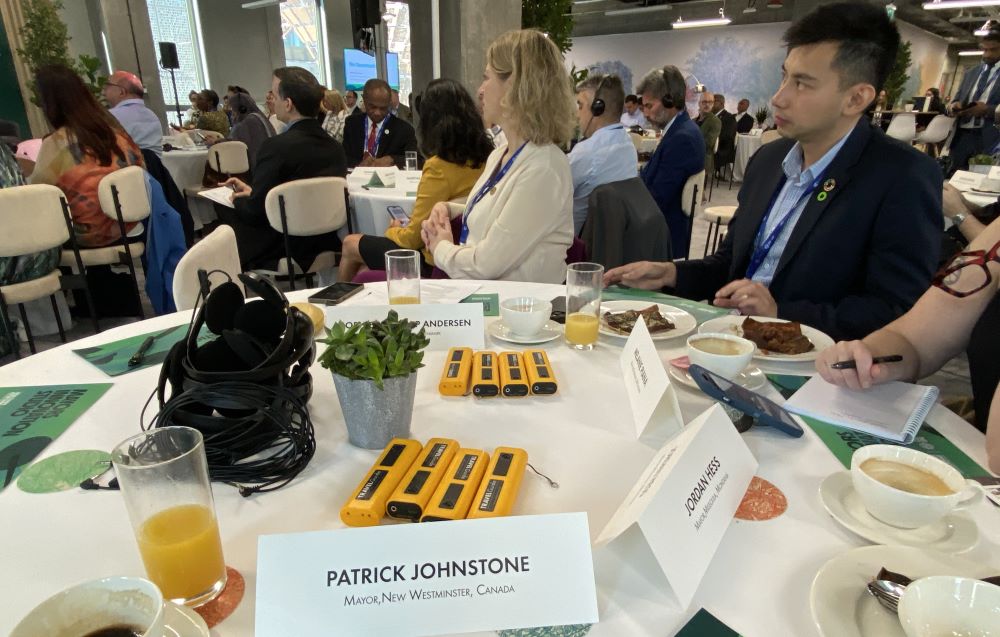
It was interesting to converse with the Mayor of Copenhagen, and hear their presentation as one of the “Coalition of High Ambition Actors”. On the face, the numbers for Copenhagen and Danish cities sound impressive – they are on target to reduce GHG emissions by 76% (from 1990 levels) before 2030, and 97 of the 99 largest municipalities are on the same track (compare that to the New West and CleanBC Goals of 30% – 50% by 2030 depending on the sector). However, this is driven mostly by the decarbonization of their electricity sector – they are closing coal plants and phasing out all other fossil fuel generation. Compare this to a jurisdiction like BC where 99% of electricity is already non-fossil-fuel, we are not ever going to match their “reduction” numbers. (for context, Danish net GHG emissions per capita are about 10T/yr, compared to about 12 for BC). At the same time, Mayor Haestorp-Andersen was a bit envious of BC’s LGCAP program, by New Westminster’s access to Low Carbon Fuel Credit funding and a climate levy to fund climate action, and even of BC and Canada’s (perhaps tepid, possibly tenuous?) Carbon Tax models. Senior government funding of local climate action is one place we in B.C. are leading over even progressive and high ambition jurisdictions like Denmark.
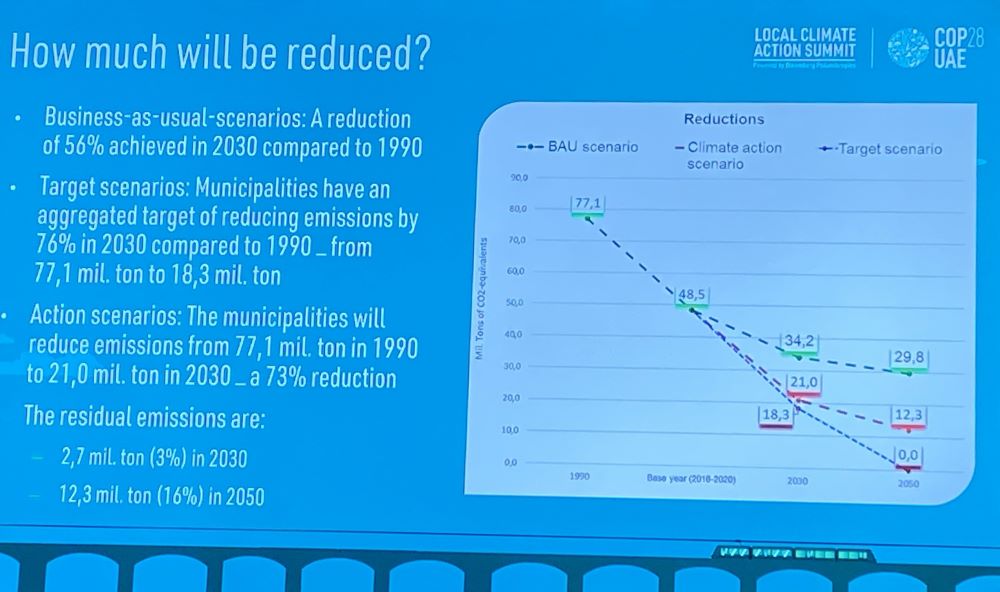
A theme across many cities was cars, and this is a place we are definitely NOT leading in BC. The transition to EVs is a distraction to the need to shift how and why we move across urban space. In Bogota (where car free days are not just a block party, but occur city-wide), they are serious about the redistribution of road space and are investing in all alternative modes. Mayor Hidalgo of Paris spoke of the “peaceful revolution” happening on the streets of her City as active transportation is taking the space away from congested traffic, with massive air quality, noise pollution, and safety benefits coming on top of GHG reductions. The Mayor of Tirana framed the automobile as anti-child when so much more is spent by his residents on cars than on children – many in his city were spending 30% of their income “raising a car”. He said when he was young, they threw out the Communist dictator, tearing down his statue from the centre of the City, and previously-unheard-of private ownership of automobiles became a symbol of their new freedom. Now, the car itself is the new dictator lording over the centre of the City, preventing them from having the freedoms and economic prosperity they seek. Erion Veliaj, welcome to the War on Cars.
There is another tell in here – “removing cars form the roads” is the almost universal metric in assessing climate action. City X talks about planting Y number of trees, and calls it “equivalent of removing 10,000 cars from the road”. City A builds a new waste resource recovery plant that captured biogas “equal to taking 50,000 cars off the road”. Once your ear is tuned to it, you hear this measure everywhere. This is perhaps unconscious jealousy of places like Bogota and Paris, where they skip the middle man.
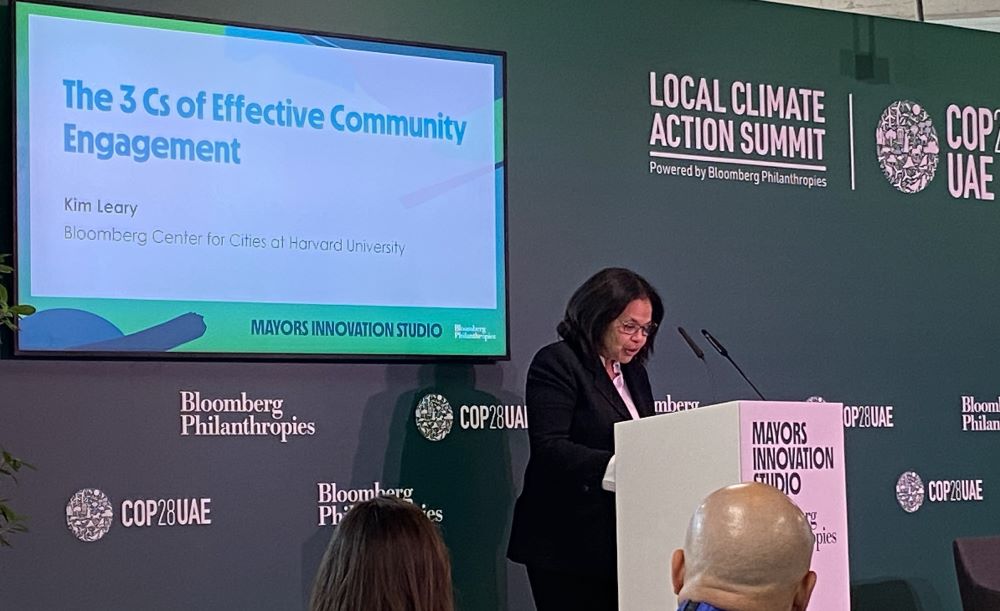
The conversations were wide-reaching, but always seemed to come back to youth. One of the quotes stuck on my brain was “Youth don’t believe in action plans, they believe in action”. From Makati to Missoula, there were stories of youth driving climate action in local communities, calling for climate justice, and seeking support to get more work done. This is not an unfamiliar theme in New West, and I was able to share the stories of Babies for Climate Action and the Monkey Rebels, two local ad-hoc organizations centering youth and pushing us towards more aggressive climate goals, while also holding our feet to the fire to achieve them. As part of an Innovation Studio workshop for Mayors, we were given some tools to better understand a 3C “Codesign – Coproduce – Cogovern” model of engagement, effective at giving youth the opportunity to learn and be active in designing the city of their future. We also learned of a fund available to help finance this work (we’ll see if we can tap into that here in New West). In the meantime, I am going to think more deeply about my role as Mayor in empowering young leaders in our community to replace action plans with climate actions.
The LCAS was intense, and a conference worth the time to travel to on its own. In my next post, I’ll try to sum up as briefly as I can the rest of the COP28 program for local governments, and leave you with some thoughts about the good, the bad, and the ugly of COP28.


